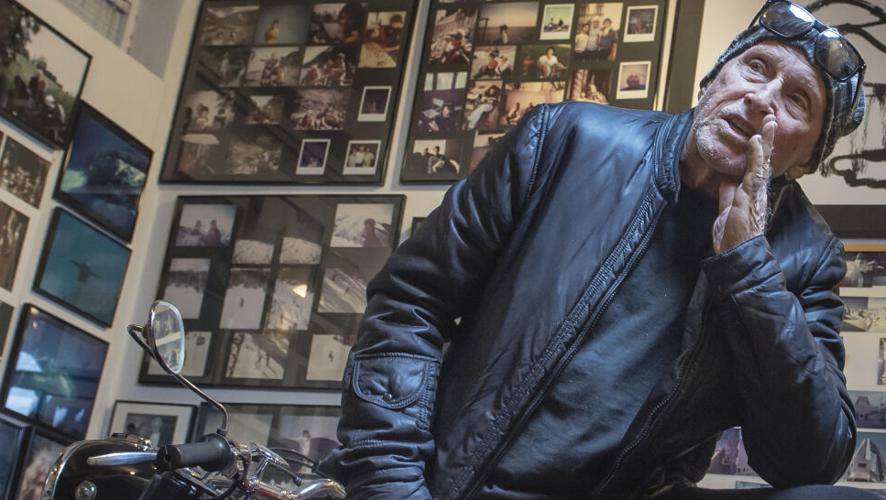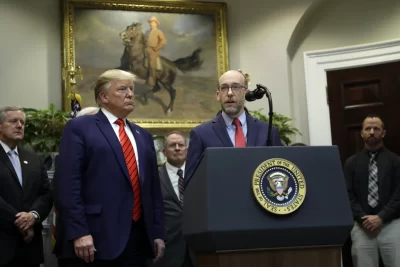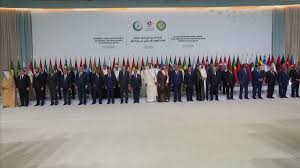
“(A) tiny percentage of my buildings are around New Mexico. There are so many more all around this country and all around the world,” Predock wrote on Feb. 2, to the Journal, when he again said: “New Mexico has been my spiritual home for 70 years and it is everything to me but I don’t like to be thought of as a local architect.”
He began his higher education at the University of Missouri in Engineering and then the University of New Mexico. He later graduated with a bachelor’s degree in architecture from Columbia University.
Predock is recognized around the world with his innovative structures. He is also remembered as an avid motorcyclist.
He was at the helm of the La Luz del Oeste, which was designed between 1967 and 1974. The West Side townhouse development is listed in the National Register of Historic Places.
The property was added to the National Register on Oct. 27, 2023.
Spanning 24 acres off Coors Boulevard on the banks of the Rio Grande, La Luz del Oeste weaves together blocks of townhouses with tennis courts, fountains, a pool, paths, and public spaces, creating a cohesive development that emphasizes pedestrian access.
Predock’s development embraces nature and follows the natural contours of the land, with townhouse blocks nestled into the hillside. The development features sweeping views of the riverside Bosque and the Sandia Mountains.
Predock explained about the project, “The concept of La Luz involves a basic attitude toward the land: An urban environment and large open natural areas should exist together — especially in New Mexico.”
Predock’s vision is also seen in the University of New Mexico School of Architecture, as well as the Albuquerque Museum, Rio Grande Nature Center and The Spencer Theater in Alto and Mesa Public Library in Los Alamos.
Outside of New Mexico, Predock designed Petco Park in San Diego, Austin City Hall in Austin, Texas, National Palace Museum Southern Branch in Southern Taiwan and the Canadian Museum for Human Rights in Winnipeg, Manitoba.
Predock and his team were spearheading the design for the city-planned Albuquerque Rail Trail, which will have a modern and artistic pathway that reflects the culture and history of the Land of Enchantment.
The Rail Trail is a 7- to 8-mile multi-use trail that will connect key destinations in the greater Downtown area.
When the city of Albuquerque began to conceptualize the trail, they chose Predock because he was someone who could integrate the unique essence, beauty, and history of Albuquerque in the trail through distinct zones.
Predock described these zones as “auras.”
Each aura celebrates the culture and history of that area. The auras contain plazitas along the path that serve as access points and gathering spots for activity and community. Each plazita will have a digital explanation of the zone featuring music, people, foods, and the broader “story of us.”
“Beginning with Enchantment Plaza and culminating with that auspicious American crossroads moment at Central Crossing where US Route 66 was joined by the railroad, the Rail Trail reveals layers of the Land of Enchantment,” Predock explained about the project. “The intense polychrome graphics on the trail’s surface at each stop along the eight-mile circle tell the story of the neighborhoods, and of Albuquerque, summing up the Land of Enchantment.”
His firm has headquarters in Taiwan, California and New Mexico.
Predock wanted his legacy to have a heavy presence in New Mexico, which is why in 2017, the UNM School of Architecture + Planning (SA+P) began to create the Predock Center for Design and Research in Predock’s former residence and professional center Downtown, which includes design studio, workshop and gallery spaces.
The University Libraries’ Center for Southwest Research received his two- and three-dimensional archives; some will be displayed on a rotating basis at the Predock Center.
Neither Predock nor his wife, sculptor and UNM professor Constance DeJong, are native New Mexicans, but they are long time residents. They chose to make these gifts based on their deep connections here. Wind, weather, light, geography and history shape every project Predock undertakes.
“Everything I learned here taught me how to pay attention to what I call site specificity,” Predock said when he gave UNM the gifts. “New Mexico taught me how to be an architect.”







